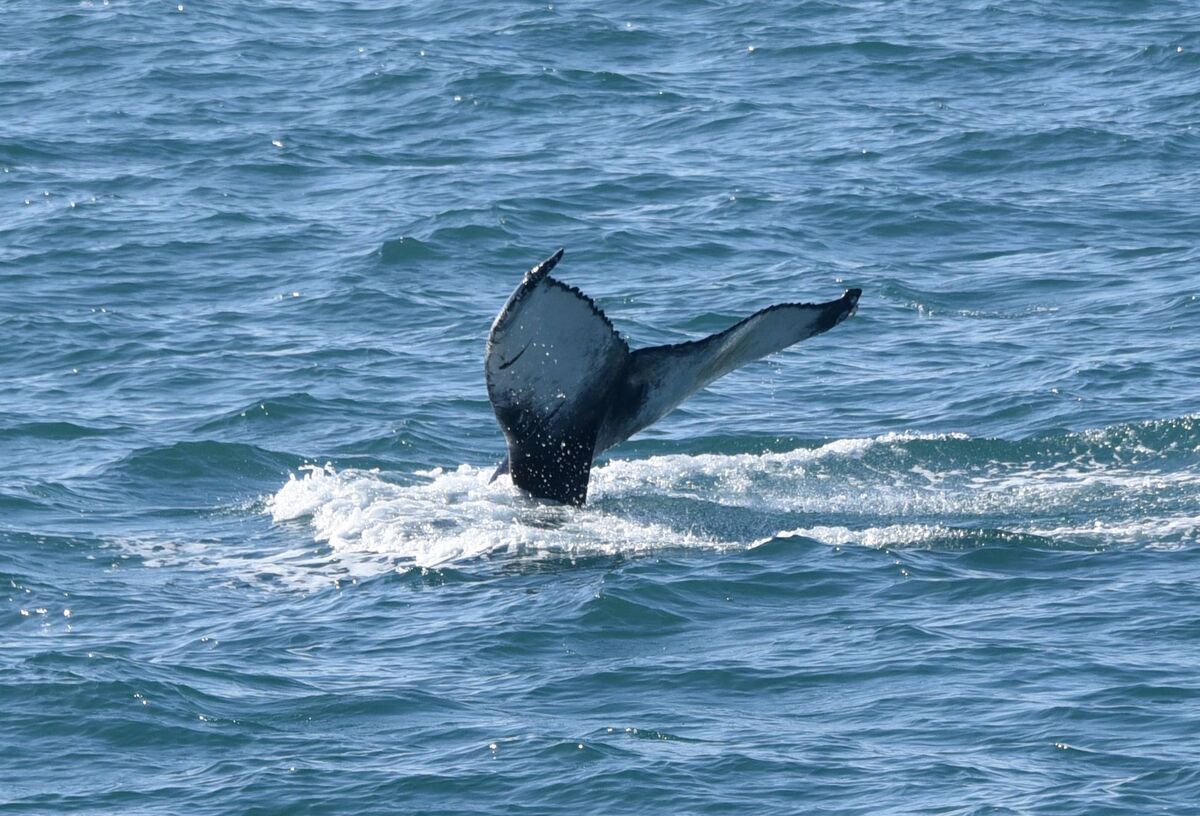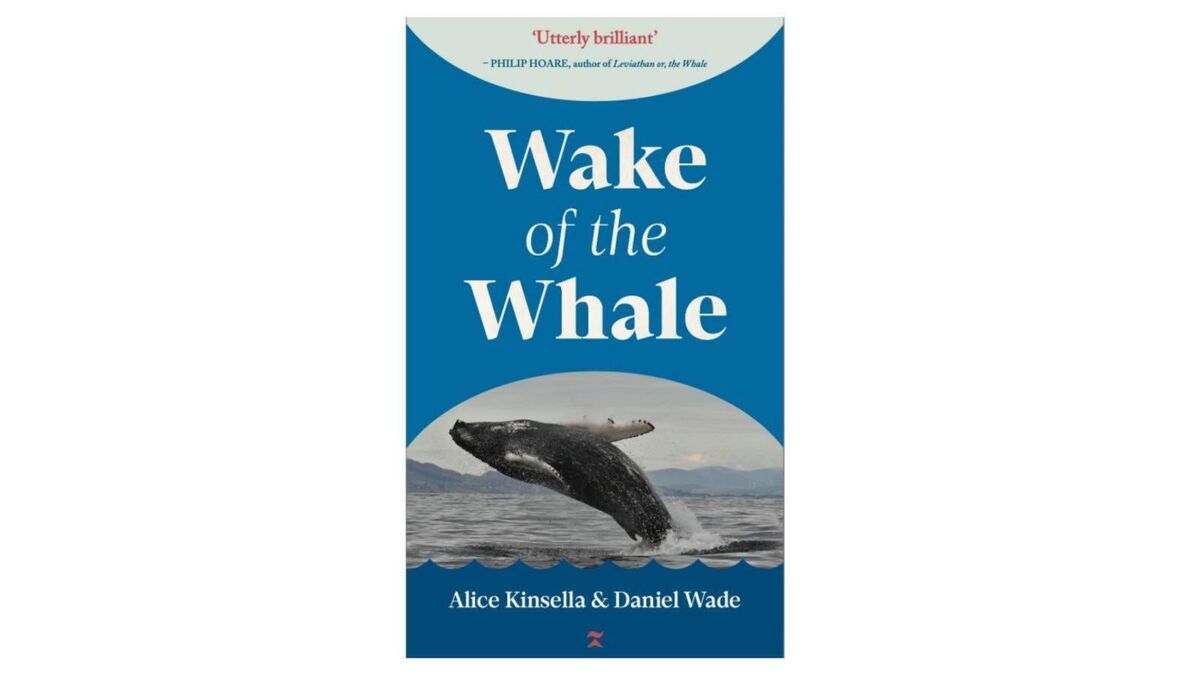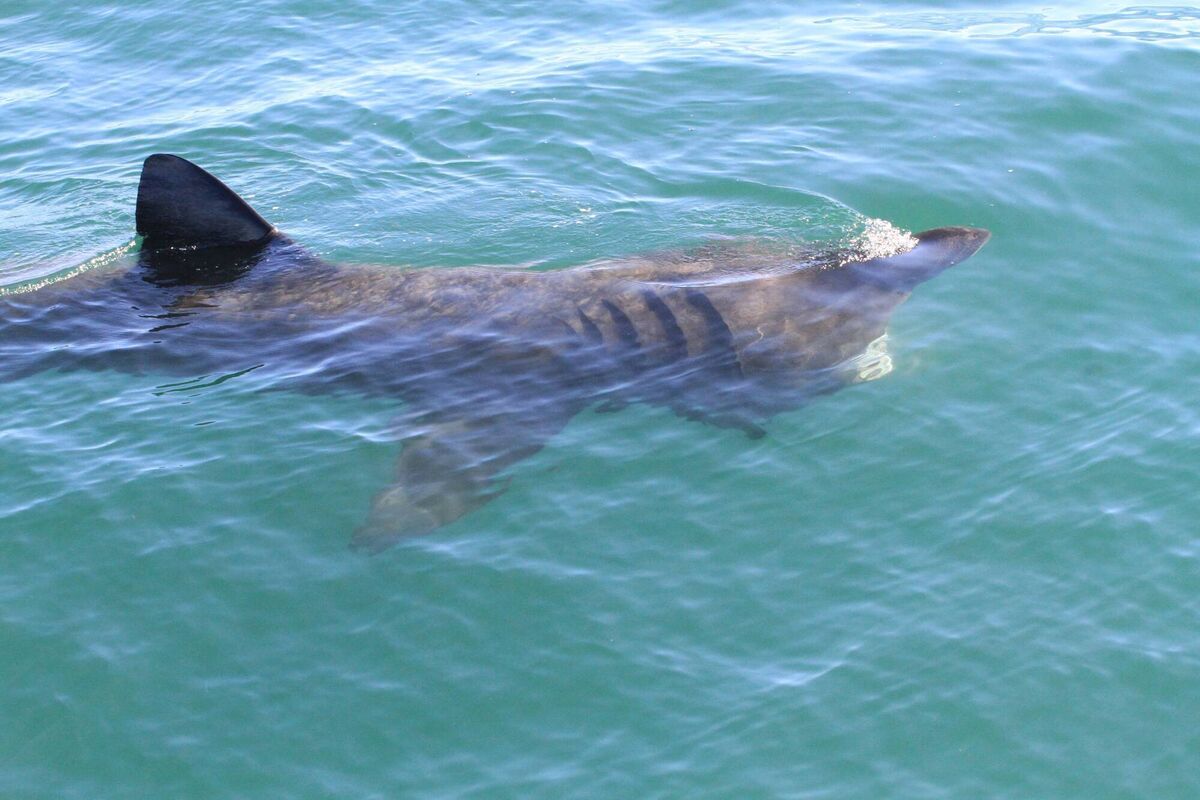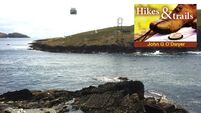Populations of humpback whales, previously devastated by whaling, making a comeback

Humpback whale sighted off the west Cork coast. Picture: atlanticwhaleandwildlifetours.com
Perched between continental Europe and the vastness of the Atlantic Ocean, whales have always, on occasion, washed up on western shores. Each stranded whale provided welcome resources for coastal communities. The meat was rich, the blubber provided fat reserves, and enormous bones were made use of too. Accounts of such strandings date from the eighth century and continue through medieval times.
In the 16th century, commercial whaling, using a harpoon and sailing boats, began to take off, in tandem with the rise of colonialism and capitalism. Whales were a source of copious quantities of oil, as much as 20 tonnes could be rendered from their blubber of just one large whale. Whale oil was used to fuel lamps, before the days of petroleum or electricity, and as a mechanical lubricant for industrial manufacturing, also on the rise. Baleen, the strong yet pliable apparatus that Baleen whales use to filter tiny creatures from the water, was used to make corsets, among other things.
Iceland recently authorized new permits for five years allowing the killing of 209 fin whales and 217 minke whales each year. While this decision is a devastating setback, IMMP will work to a complete and immediate end to commercial whaling. https://t.co/FP8lJ18Bms
— International Marine Mammal Project (IMMP) (@MarineMammalOrg) December 12, 2024
It was only at the start of the 20th century that commercial whaling at scale began in Ireland, when Norwegian whalers built two whaling stations on the Mullet Peninsula in County Mayo, one in Blacksod Bay, the other nearby on the Iniskea Islands. From these remote locations, whaling ships had ready access to the deep waters of the Rockall trough.
Initially, the whaling ships caught North Atlantic right whales. Right whales are thus named because they were considered the ‘right’ whales to catch on account of their docile nature and because as much as 45% of their body weight is blubber, which makes them float when killed, and which produces high yields of valuable whale oil. After only three years of operation, no more right whales were caught. Now, North Atlantic right whales are among the most endangered whales in the world due to the effects of commercial whaling.
In total, 894 whales were killed by whaling ships operating from these two stations between 1908 and 1922, not accounting for the whales that were harpooned but not captured. The real mortality is thought to be closer to 1,000 whales. Species caught include 590 fin whales, 126 blue whales, 91 sei whales, 63 sperm whales, 18 right whales, and six humpback whales. This represents a small fraction of the global whaling industry.
The Norwegian stations in Ireland were relatively short-lived, but internationally, whaling continued and reached a peak in the late 1930s, when more than 50,000 whales were killed annually. It is estimated that three million whales were killed during the course of the 20th century. The expansion of petroleum did not ease the pressure on whales, as other uses were found to maintain profitability of the whaling industry. Only in the 1980s, when whale populations were decimated, did the international community call a moratorium on commercial whaling through the International Whaling Commission (IWC).
In 1991 Ireland became the first Whale and Dolphin Sanctuary in Europe, designating the entire exclusive fishing zone, extending 200 miles from the coast, as protected waters for these marine mammals. This was a hugely positive move at the time.

However, now that we have a better understanding of how much sound is vital to whales’ existence, we could extend this ‘sanctuary’ to protect whales in Irish waters from the impacts of noise pollution. Seismic surveys, including those undertaken when drilling for and extracting fossil fuels at sea, and even the everyday noise of shipping traffic can be deafening to whales and impact their ability to find food, communicate with kin, and navigate.
Today, populations of humpback whales, previously devastated by whaling, are making a comeback. It is now not unusual to see humpback whales on whale-watching trips off the south and west coast. Others, such as blue whales, the largest animals ever to have existed, have not yet recovered from the impact of commercial whaling. Sei whales also remain endangered. North Atlantic right whales, classified as critically endangered, remain on the brink of extinction. In July 2024, a North Atlantic right whale was spotted in Donegal Bay — the first sighting here for many decades.
Today, whaling continues in Japan, Iceland, and Norway. In December 2024, Iceland issued permits to two whaling companies to continue hunting fin whales and minke whales until 2029, despite significant opposition from both within Iceland, where many believe that commercial whaling hurts Iceland's image as a tourism destination, and internationally. In other countries, aboriginal whaling is allowed to continue on a subsistence rather than a profit-making basis, for example as carried out by First Nations people in Canada and the Danish dependencies of the Faroe Islands and Greenland.

A newly published book, by Alice Kinsella and Daniel Wade [Mayo Books Press] tracks the legacy of whaling in Ireland, including this global historical context and the social history within Mayo. It is a truly gorgeous book, an enthralling exploration of whales and whaling in Mayo, combining personal, poetic and reflective writing with succinct factual descriptions of whales and the state of North Mayo at the time of whaling.

The authors cover the historical context of land ownership in Mayo in the 19th century; land agitation by Michael Davitt, James Daly and others; and the autonomy of the Iniskea Islanders as context for the social history of north Mayo. Meticulously researched, the pages contain beautifully presented archival material, including old maps; newspaper reports from the time; accounts of life as a worker at the whaling stations; and photos of whaling ships and whales, both historic and current.
Alice Kinsella and Daniel Wade document their growing obsession with the whaling industry here and the whales, as prey and commodity. As readers, we are carried along on the thrill of exploration as they venture out from the coast of Mayo to watch a humpback whale breaching water with her enormous belly, the writers grappling with the similarities of whales to us (as warm-blooded animals who feed their young with breast milk) yet profoundly ‘other’.
This is a hugely important, deeply insightful and genre-bending book. If you’re still in need of a Christmas gift, I cannot recommend highly enough.






